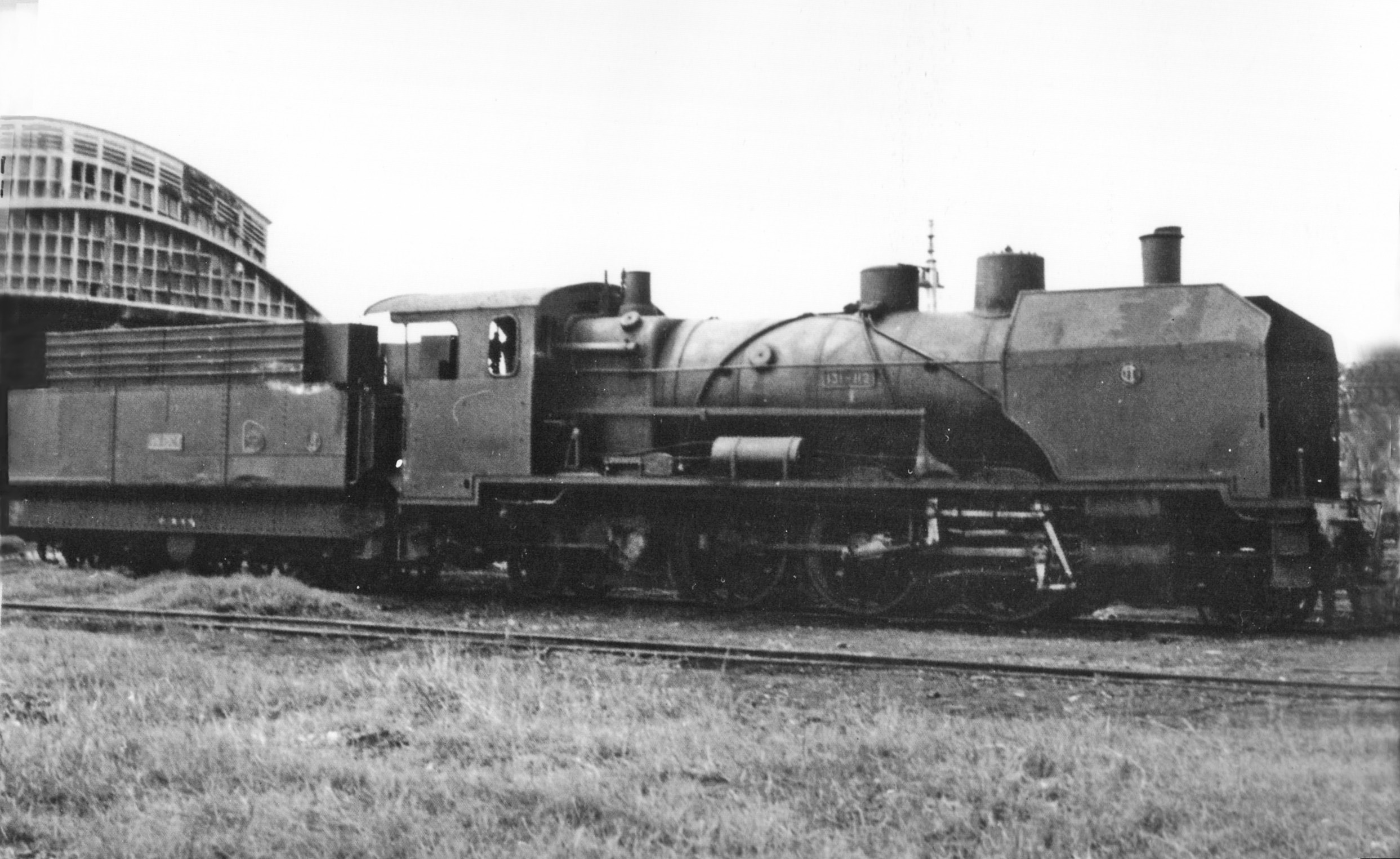
Hannoversche Maschinenbau AG (Hanomag) 2-10-0 “Decapod” No 107 pictured in service in Cambodia before its transfer to Saigon
Several years before the opening of the Transindindochinois (North-South railway line) in 1936, officials of the Chemins de fer de l’Indochine (CFI) resolved to bring a number of privately-run railways under government control, with a view to rationalising the rail network and, crucially, getting their hands on some powerful new German-built locomotives.
Opened in 1933, Cambodia’s Phnom Penh-Mongkolborey line was built and operated initially as a franchise by the Compagnie des chemins de fer du sud de l’Indochine (CCFSI). The funding for the construction of the line came from German war reparations, which also made possible the acquisition of a powerful fleet of 20 locomotives built by the Hannoversche Maschinenbau AG (Hanomag) company of Hanover. These comprised seven 4-6-2 “Pacifics” (numbered 1-7), ten 2-10-0 “Decapods” (numbered 101-110) and three 2-8-2T freight locomotives (numbered 201-203), all built in 1930.
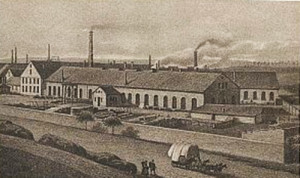
The Hannoversche Maschinenbau AG (Hanomag) factory
In fact, the CCFSI franchise lasted little more than three years. Soon after the line opened, scrutiny of the company’s accounts by government auditors revealed that significant savings could be made if the line was returned to the Colony and run directly as part of the réseaux non concédés (non-conceded networks, also known as CFI). On that basis, following a decision of the Governor General dated 1 December 1934, it was announced that with effect from 1 January 1936 the franchise would be returned to the government and the line would become part of the CFI’s Réseau du Sud (Southern Network), headquartered in Saigon.
However, subsequent events suggest that the takeover of the Phnom Penh-Mongkolborey line from CCFSI was part of a wider plan by the colonial authorities to rationalise the rail networks in advance of the opening of the Transindochinois (North-South line), and in particular to permit CFI to get its hands on the powerful German locomotives which were owned by the private railway companies.
Even before the expiry of the CCFSI contract, the CFI began a controversial locomotive exchange between Phnom Penh and Saigon, transferring the heavier and stronger Cambodian Hanomag locomotives to Cochinchina and replacing them with older and lower-powered CFI engines. This exchange was viewed with alarm by colonial councillors in Phnom Penh, who in late 1935 sent a strongly-worded Resolution to the Grand conseil des intérêts économiques et financiers de l’Indochine (Supreme Council for the Economic and Financial Interests of Indochina) for discussion. Here is a translation of the Resolution and the Supreme Council’s reply:
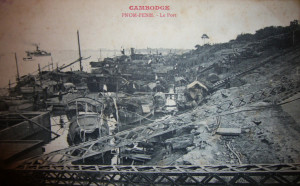
Phnom Penh Port in the colonial era
RESOLUTION No. 8 regarding the locomotives of the Phnom Penh-Battambang-Mongkolborey railway.
The Governor General, by means of an order issued before the end of 1934, has withdrawn the concession agreement granted previously to the Phnom Penh-Mongkolborey railway; the Company will return the conceded line to the Administration on 1 January 1936.
From that date; the line will be administered by the Circonscription d’exploitation des chemins de fer non concédés [the administration of the non-conceded rail networks, ie CFI].
We had assumed that the CFI would not take over the running of the Phnom Penh-Mongkolborey line until 1 January 1936, after the expiry of the franchise.
But that’s not the case. Assuming its powers several months in advance of the expiry of the existing franchise, CFI has already given the order to dismantle the best locomotives in the network. The first one has already been crated up for delivery by ship to Saigon, and the others will follow.
It seems that one network is being stripped to re-equip another.
What will be sent to replace our good locomotives, which gave such excellent service on our expresses, without ever once being late? One cannot improve on a perfect service, it can only be made worse.
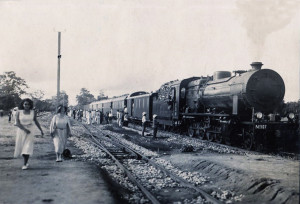
Hannoversche Maschinenbau AG (Hanomag) 2-10-0 “Decapod” No 107 pictured in service in Cambodia before its transfer to Saigon
Is it really wise, in a period of crisis, to carry out experiments like this, the results of which will more than likely be doubtful? Wouldn’t it be better to leave things as they are?
Under these conditions, the undersigned Councillors express the wish that the status quo is maintained, and that the locomotive already dismantled be reassembled forthwith and returned to service on the Phnom Penh-Mongkolborey line.
Signed: Navarre, Tromeur, Tan-Mau, Lim-Hac-Seng, Tea-San
RESPONSE
The change in usage of some locomotives, which had hitherto been used on the Phnom Penh-Battambang-Mongkolborey line, and which prompted the submission of this Resolution, are the logical consequence of the recovery of this line by the Colony, and of the need to make the best use of equipment belonging to all of the non-conceded networks.
The concession of the Phnom Penh-Battambang-Mongkolborey line was withdrawn from the Compagnie des Chemins de fer du Sud de l’Indochine for various reasons. One is that, with the impending completion of the Transindochinois, the withdrawal of the franchise facilitates the reorganisation of services on the non-conceded networks, in other words a complete regrouping and consolidation of the railway lines under the management of the Colony, as recommended by the Finance Committee of the Chamber of Deputies and advised by the Minister of Colonies.
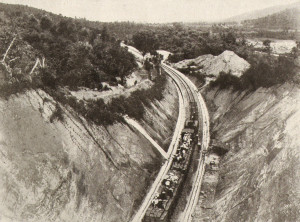
The Transindochinois under construction
One benefit of this regrouping is that, by facilitating locomotive exchanges, it permits a better distribution of rolling stock throughout all of the networks. While the reserve equipment required for a single network is substantial, considerable savings may be made by drawing on a common pool of reserve equipment for all of the networks together.
It turns out that the Phnom Penh-Mongkolborey line had been very generously endowed with equipment, because at the time of construction of the line, it had been expected that after opening there would be a rapid and significant increase in traffic. The Cambodian locomotive fleet today is superabundant: Two “Pacific” locomotives, five “Decapod” locomotives and three freight locomotives could easily be removed without inconvenience to the line’s operation. Moreover, the “Pacific” locomotives in service on the line have much greater power than is necessary for the haulage of trains between Phnom Penh and Mongkolborey, and thus their continued use is not economical.
Furthermore, the completion of the Transindochinois obliges the Colony to increase the amount of rolling stock in service on the non-conceded networks; in particular, it will need “Pacific” locomotives to haul the accelerated Hanoi-Saigon service, which from 1936 must be offered on a daily basis. On the other hand, the less powerful 200 [Société Franco-Belge 4-4-0 “Américaine”] and 300 [J F Cail 4-6-0 “Ten wheel”] locomotives, which are not suitable for use on the Transindochinois, will be more than sufficient on a railway of excellent profile such as Phnom Penh-Mongkolborey, to ensure the haulage of the passenger trains currently scheduled, at current tonnages and speeds.
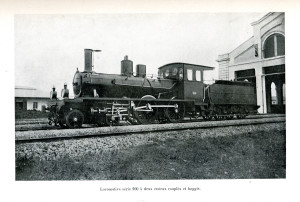
One of the Société Franco-Belge 200 4-4-0 “Américaine” locomotives exchanged for larger and more powerful Hanomag machines
The merger of the Cambodian network with CFI, to be carried out on 1 January 1936, will permit the transfer of 200 and 300 locomotives to the Phnom Penh-Mongkolborey line and of the seven CCFSI locomotives (five currently in service and two surplus to requirements) to the Saigon-Hanoi line.
The five units removed from service on the Phnom Penh-Mongkolborey line will be replaced unit for unit: trials are currently underway for the selection of the most suitable locomotive models to replace them. Thus, the Colony has ordered the transfer of at least seven locomotives, without compromising in any way the good operation of either network. The exchange began in 1935 and has thus far been limited to one “Pacific” which has been replaced by a 200. The CCFSI does not regard the disposal of surplus locomotives before the return of the line to the Colony as an inconvenience.
Thus, the actions described in this Resolution had neither the purpose nor the result of “stripping” one network for the benefit of another, but rather of ensuring, throughout all of the unconceded networks, a better distribution of traction. The exchange is being conducted for the benefit of the general interest, which must take precedence over private interests.
From Réponses aux voeux émis par le Grand conseil des intérêts économiques et financiers de l’Indochine au cours de sa session ordinaire de 1935 (Hanoï: Imprimerie G Taupin & Cie, 1936)
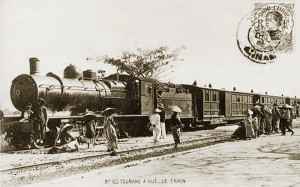
One of the J F Cail 300 4-6-0 “Ten wheel” locomotives exchanged for larger and more powerful Hanomag machines
In fact, CFI had their eyes on more than seven locomotives – by the end of 1936, the entire 20-strong Hanomag fleet had been transferred to Saigon, where they were all put to work on the more demanding distances and gradients of the North-South line. In return, the Cambodian railway received not just 4-4-0 “Américaines” and 4-6-0 “Ten wheels,” but also several Société Franco-Belge 2-6-2 “Prairies.”
A very similar fate befell another southern rail franchise, the Bến Đồng Sổ-Lộc Ninh rubber plantation branch, which had also been built using German war reparations and opened in 1933 under the management of the Compagnie des voies ferrées de Lộc Ninh et du centre Indochinois (Lộc Ninh and Central Indochina Railway Company, CVFLNCI).
However, the powerful German locomotive fleet with which this line had been endowed – three 2-8-0 “Consolidation” locomotives (numbered 300-302) built in 1930–1931 by Borsig of Berlin – proved too heavy for the lighter grade rails of the Saigon tramway network, on which CVFLNCI freight services relied to access the Saigon Port. Consequently, the company was already hiring lighter locomotives from CFI when the termination of its franchise was announced in a governmental order of 6 August 1935.
Once again, the CFI used the argument that direct exploitation by the CFI could turn the company’s operating deficit into a surplus within a few years. As with the Cambodian line, the Bến Đồng Sổ-Lộc Ninh branch passed into government ownership with effect from 1 January 1936. Later that year, all three Borsig “Consolidation” locomotives were transferred to Saigon for use on the Transindichinois.
Eventually, the Cambodian railway was more than compensated for the removal of its powerful German locomotive fleet. In 1949-1952, in the wake of the establishment of the new Associated State of Cambodia within the French Union, the Cambodian network received a quota of SACM 4-6-2 “Super Pacifics” and SACM-Graffenstaden 2-8-2 “Mikados” to replace the older “Américaines” and “Ten wheels” which the CFI had compelled them to accept 15 years earlier.
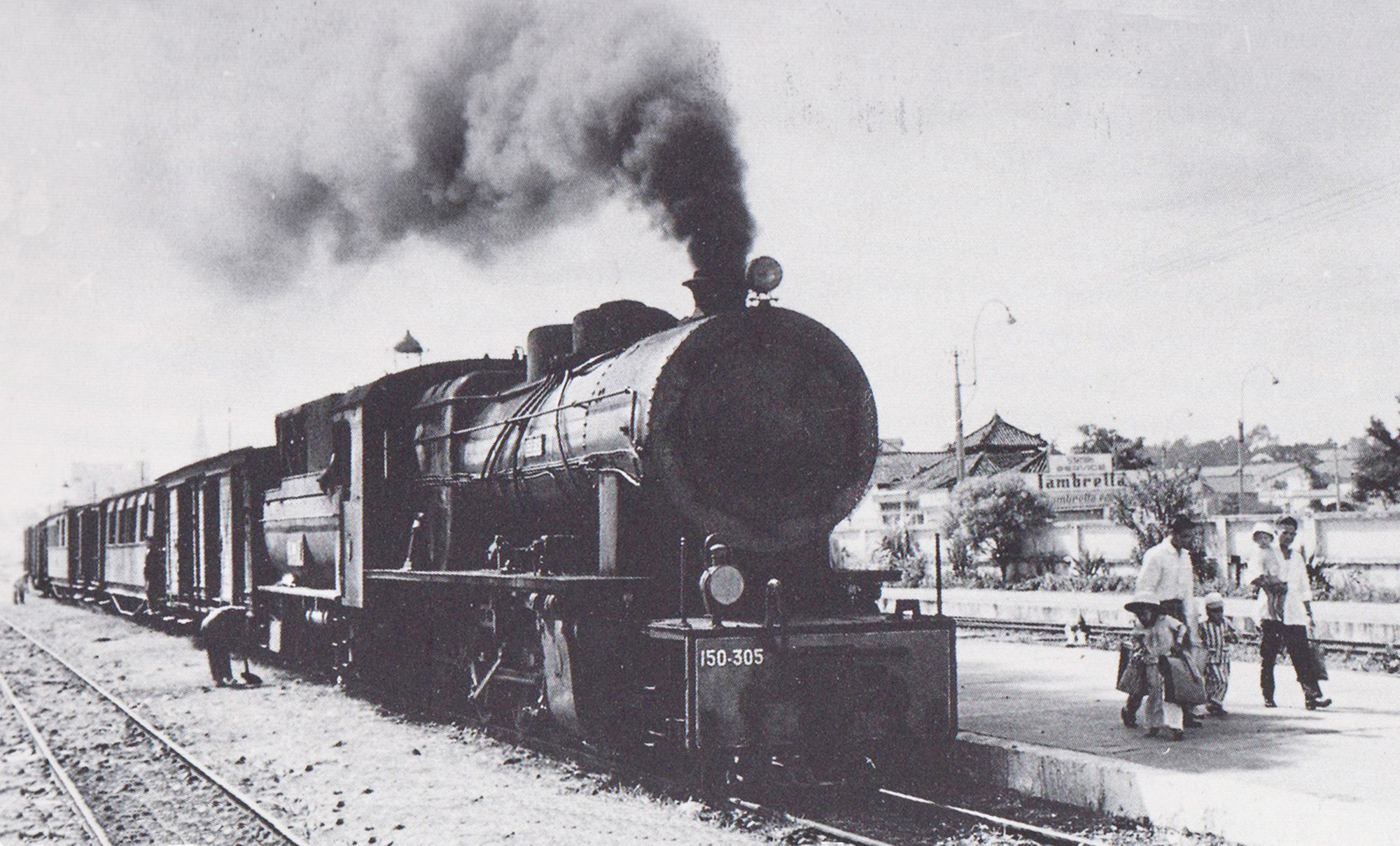
Saigon, 1958 – Hannoversche Maschinenbau AG (Hanomag) 2-10-0 “Decapod” No 150-305, originally built for Cambodia, arrives with a local train. Photo Guy Rannou

Hannoversche Maschinenbau AG (Hanomag) 4-6-2 “Pacific” No 3 pictured in service on the Transindochinois in the late 1930s

A works photograph of a Borsig 2-8-0 “Consolidation” locomotive similar to those which were supplied to the Bến Đồng Sổ-Lộc Ninh line
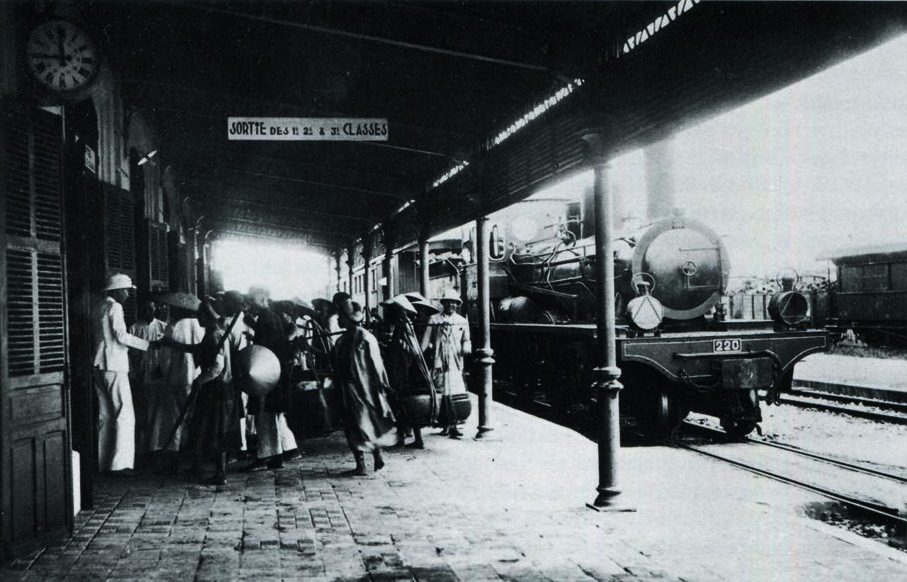
A Société Franco-Belge 4-4-0 “Américaine” arriving at Vinh Station (CAOM)
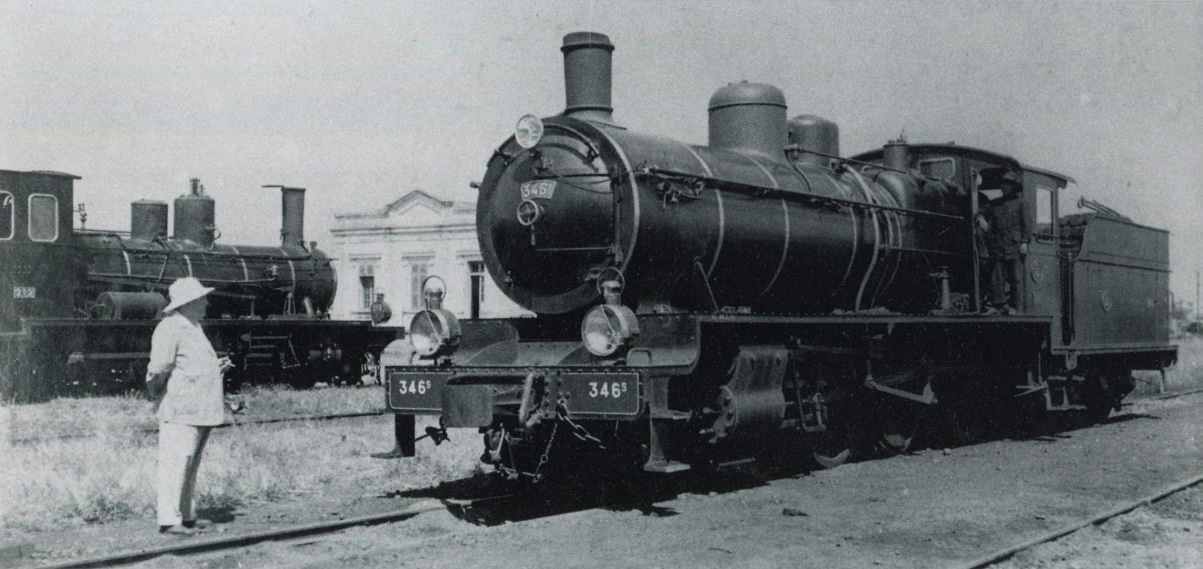
A later superheated version of the J F Cail 300 4-6-0 “Ten wheel” locomotive at Hà Nội Depot
Tim Doling is the author of The Railways and Tramways of Việt Nam (White Lotus Press, Bangkok, 2012) and also gives talks on Việt Nam railway history to visiting groups.
A full index of all Tim’s blog articles since November 2013 is now available here.
Join the Facebook group Rail Thing – Railways and Tramways of Việt Nam for more information about Việt Nam’s railway and tramway history and all the latest news from Vietnam Railways.
You may also be interested in these articles on the railways and tramways of Việt Nam, Cambodia and Laos:
The Saigon-Mỹ Tho Railway line
The changing faces of Saigon railway station
The Việt Nam Railways Building in Saigon
Saigon tramway network
Derailing Saigon’s 1966 monorail dream
Dồng Nai Forestry Tramway
Saigon’s Rubber Line
The Langbian Cog Railway
A relic of the steam railway age in Đà Nẵng
By Tram to Hội An
The railway which became an aerial tramway
The lost railway works of Trường Thi
The Long Biên Bridge – “a misshapen but essential component of Hà Nội’s heritage”
Hà Nội tramway network
Phủ Ninh Giang-Cẩm Giàng tramway
Goodbye to Steam at Thái Nguyên Steel Works
Full steam ahead on Cambodia’s Toll Royal Railway
The mysterious Khon island portage railway


